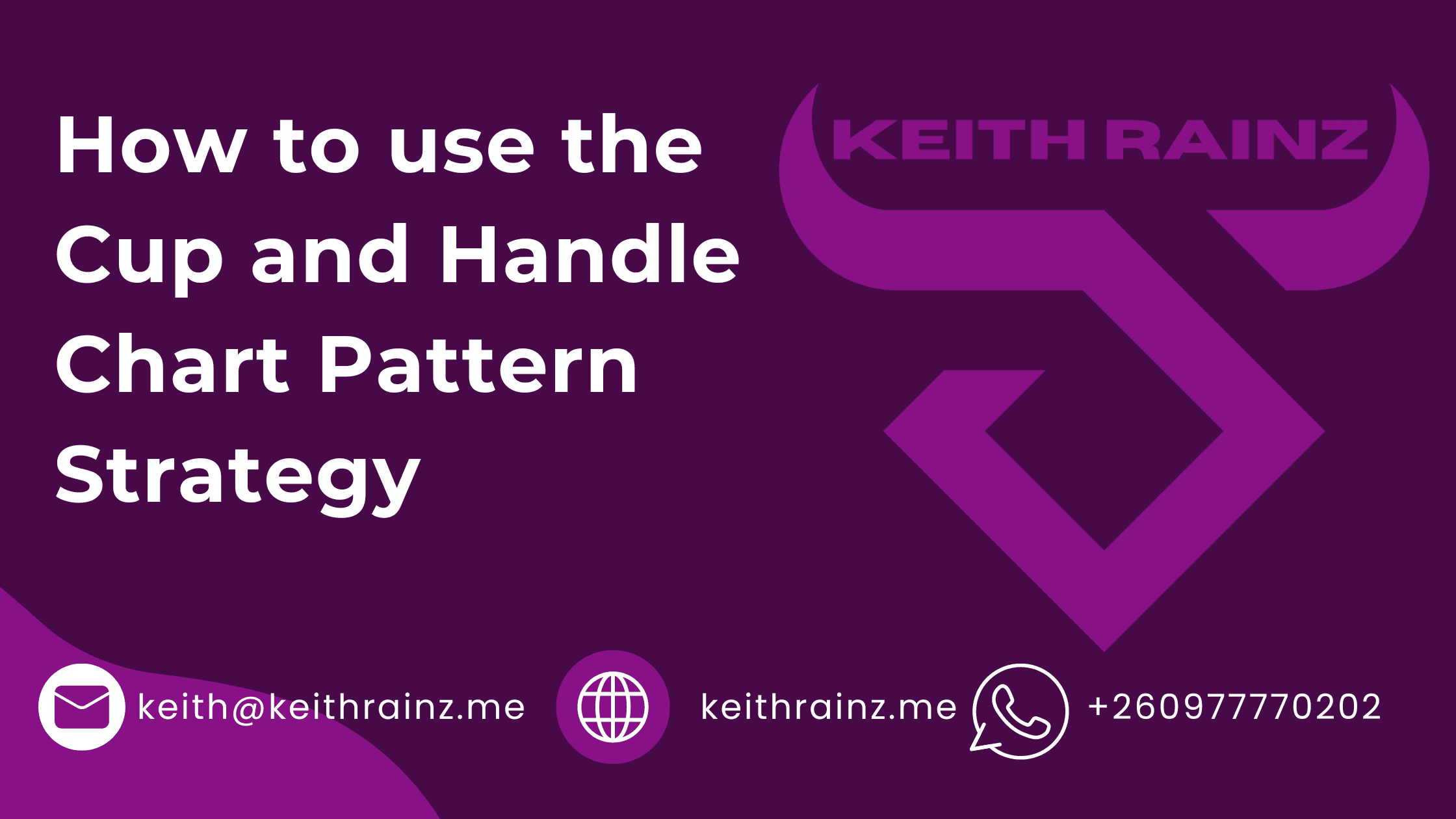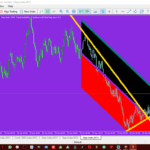For successful trading, it is necessary to analyse a number of principles related to trading in financial markets or instruments. There are a variety of elements that can affect a transaction, including the state of the market, instrument price movements, the need for certain trading platforms, charts and patterns, and cutting-edge trading tools. For successful trading, traders need to be knowledgeable about the markets as well as alert.
Through brokers or other financial institutions that are readily available on the market, they employ the trading tools or platforms. These offer the best services to help traders and market professionals engage in lucrative trading. A trader searches for sophisticated indicators and trading tools that can assess price changes and aid in making wise trading selections.
This article describes charts and patterns, one of the most important and popular trading tools. But it focuses especially on the cup-and-handles chart pattern, which is commonly employed by traders to study the market. To help traders, we’ll have a thorough understanding of chart patterns and how they function.
How do chart patterns work?
Chart patterns are graphical depictions of several types of instrument price movements. The movement of the prices causes the pattern to develop on the charts. Any financial market, including stocks, foreign exchange, cryptocurrencies, commodities, indexes, metals, etc., could have the same chart patterns.
The majority of traders who employ technical analysis in trading are stock and commodity traders, who heavily rely on chart patterns. The graph that results from the data about price variations shows a naturally occurring pattern. In some circumstances, the patterns may be repeating, thus traders rely on them while trading in the markets.
Different patterns can be seen on charts as a result of market circumstances and other factors that affect the price of the instruments. These patterns may be continuation or reversal signs in the market; traders carefully examine them for profitable bets.
Chart Pattern Types
The market analysts use three different types of chart patterns. To aid traders in understanding the three primary patterns and how to apply them in the financial markets, they are detailed below. So let’s fast enter to increase our knowledge:
Classic Chart Pattern
The market’s most popular and often used patterns are the conventional chart patterns. These have been available on the market for many years, and traders continue to favour them in order to make wise trading choices. By looking into the patterns’ usage in the past, traders can rely on them and put them to use for their own gain.
The conventional chart patterns for reversal and continuation are listed below:
- Patterns on reversal charts: head and shoulders
- Reversal from three bottoms
- reversed double bottom
- reversed double top
- Reversal of three tops
- Reversing key bar
- Following Chart Patterns:
- Pennant with a flag
- Channel
- Triangle
- Handle and a Cup
- Charting Harmonics
- In order to validate the harmonic patterns, harmonic chart patterns require certain structures with distinct and successive Fibonacci ratio alignments. The patterns predict potential market reversals and compute the Fibonacci of the price structures.
The pattern presupposes that the generated cycles or patterns are ongoing. These patterns allow traders to join and leave the market while making money on their investments.
Here is a list of common harmonic patterns found in commerce:
Drives: Butterfly Cypher Shark Crab Bat Deep crab
AB=CD 5-0
Pattern of the Gartley Candlestick Chart
Candlestick is a well-known pattern on market charts that traders utilise to make profitable trades. It is a candle with a stick chart pattern that is forming using technical analysis. These aid in forecasting market change and graphically depict the price changes of the market.
Since Steve Nison first popularised the Candlestick pattern, it has been utilised extensively throughout the globe. Trading professionals can use its many candlestick patterns to study the market.
Several candlestick patterns include:
- Backward hammer
- blazing star
- Three soldiers in white
- Early morning Hammer
- engulfing bullish
- Man being hung
- Three crows in black
- Patterned Cup and Handle Chart
- The cup and handle chart pattern is the primary topic of the article’s conventional chart patterns section. It is a very well-liked chart pattern that shows price changes. The chart pattern we’ll be talking about is similar to the shape of a cup and its handle, which is why it gets its name from the shape of a cup.
It prompts a U-shaped cup and a handle, which represents the market’s breakout. Typically, the cup and handle represent a bullish market indication and show an upward trend with numerous trading chances.
The cup-and-handle chart pattern represents how the price of an instrument moves in a specific direction, taking the form of a cup and handle. Traders can easily spot the pattern on the graph. It serves as a technical market price change indicator.
The cup and handle formation on the graph resembles a bowl in a U shape, and the handle develops close to it before moving slightly downward and then upward. Less trade volume in the market is indicated by the pattern’s right-hand side. Although formations may take seven to 65 weeks to form, traders must keep an eye on the market to check for them.
William O’Neil created the cup and handle chart pattern in 1988 through his book “How to make money in Stocks.”
Cup and handle pattern analysis
The cup and handle chart patterns appear on graphs or charts to show the state of the market. The patterns might be used for trading over small time periods, like a minute or an hour, or over longer time periods, like days, weeks, or months. Trading can therefore be done using it for both types of investors.
The cup’s handle denotes market stabilisation following a price decline. The U-shaped cup is made by travelling lower and then upward in order to stabilise the trade as it moves back to the same magnitude, following which the handle is formed.
The price of the instrument slides sideways in the handle, adopting the form of a handle fastened to a U-shaped cup. However, traders should first analyse the market and shape of the handle because it might also be triangle-shaped.
The handle should be smaller than the cup according to the pattern of the cup and handle. It should stay in the upper third of the cup and not lower than the bottom half. Let’s look at an example to better comprehend the pattern. If the price of the cup is between $98 and $100, the handle should fall between $99 and $100.
Trading should be avoided if the handle generated is too deep because the likelihood of profitability is lower in such circumstances.
Additionally, the cup and handle indicate a market reversal and continuation. When an instrument’s price is falling, a pattern is produced that, over time, takes the form of a cup with a handle, reversing the market trend and causing instrument prices to start climbing. Traders can identify this pattern.
While the market is on an uptrend, the continuation pattern forms. The cup and handle are formed as the instrument price grows, and it then keeps rising.
By utilising these indicators, traders can determine which pattern has formed and what they should do to maximise their investment.
What Do a Cup and a Handle Mean?
The cup and handle pattern is seen as a bullish market pattern that alerts investors to market purchasing chances. Depending on the state of the market, the decline indicated by the pattern’s creation could last for days or even weeks. Due to the pressure produced by sellers in the market, instrument prices are rising.
When employing the pattern, the trader should use caution and make decisions while considering other market factors. The chance of failure is increased by the financial markets’ turbulence. Utilize the chart patterns that assist traders in predicting market changes to control them.
Trading participants should be aware of the following in order to utilise the cup and handle properly:
Pattern’s duration
The cup and handle pattern’s length is crucial for spotting it on charts and making the best trading selections. The bottom of the cups, which often form in a U shape, displays a strong market indication. Because these are not the cups that traders should be looking for, they should steer clear of them.
the pattern’s depth
To recognise the pattern, both the depth and length are required. The cup shouldn’t be too deep, and similarly, you shouldn’t use handles that are too deep. The upper portion of the cup is where the handle should be.
Volume
The amount of trade is also crucial since it provides insight into market activity. When an instrument’s price lowers, the volume of trading also does so and stays below the average of the cup’s bottom.
When the price breaks out above the handle resistance, there is a noticeable rise in trade volume.
Duration
On the weekly charts, the cup that forms can last up to six months or perhaps longer. However, the handle created is for a week to a few weeks, and is often finished in one to four weeks.
what the pattern is aiming for
The goal of the pattern is to calculate an estimate by measuring the distance between the right cup peak and bottom.
Trend
There should be a previous pattern that has been present for some time in the continuation pattern. It can be a few months old and not mature because there are fewer possibilities of the pattern continuing when a trend is mature. Additionally, it offers the trader less upside potential.
To make a successful investment, traders should be able to distil the pattern’s core. In order to make educated decisions and become the market experts, they can analyse the charts and patterns formed, perform their own analysis, and conduct research into how it works.
Cup and Handle Chart Pattern Restrictions
Cup and handle are technical indicators, and they all have their own restrictions just like the other instruments do. Before making a choice, the pattern should be used in conjunction with other technical indicators. One never knows if these will result in revenue or loss. The cup and handle pattern’s first drawback is that it takes some time to form. Delays in decision-making
It may take a month to a year to develop, or it may happen in a week. Consequently, it might be challenging for traders to recognise and employ.
The cup that is formed in the cup and handle design could also be shallow and serve as a signal, which is another drawback. In contrast, a deep cup may send a deceptive signal. Because formations take time and occasionally may be imperfect, analysis becomes challenging.
Conclusion
A distinctive chart pattern that can be used by traders to make money on the stock market is the cup and handle. They can quickly spot the trend and trade in the market to profit. With the essay, readers may rapidly examine and recognise the pattern on the charts by understanding it and its characteristics.
But before diving in, practise is necessary. Traders can open trading accounts with reputable brokers like PrimeFin, a regulated and licenced broker with cutting-edge resources for successful trading.
The cup and handle chart patterns can be used by traders to trade and profit from their investments.







